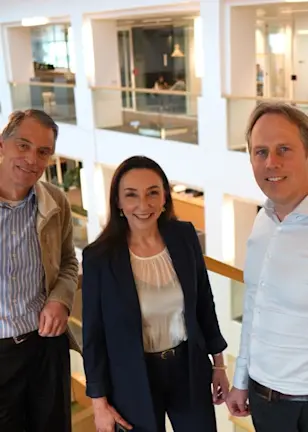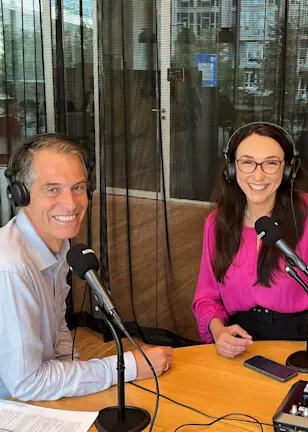Disclaimer Robeco Switzerland Ltd.
The information contained on these pages is solely for marketing purposes.
Access to the funds is restricted to (i) Qualified Investors within the meaning of art. 10 para. 3 et sequ. of the Swiss Federal Act on Collective Investment Schemes (“CISA”), (ii) Institutional Investors within the meaning of art. 4 para. 3 and 4 of the Financial Services Act (“FinSA”) domiciled Switzerland and (iii) Professional Clients in accordance with Annex II of the Markets in Financial Instruments Directive II (“MiFID II”) domiciled in the European Union und European Economic Area with a license to distribute / promote financial instruments in such capacity or herewith requesting respective information on products and services in their capacity as Professional Clients.
The Funds are domiciled in Luxembourg and The Netherlands. ACOLIN Fund Services AG, postal address: Leutschenbachstrasse 50, CH-8050 Zürich, acts as the Swiss representative of the Fund(s). UBS Switzerland AG, Bahnhofstrasse 45, 8001 Zurich, postal address: Europastrasse 2, P.O. Box, CH-8152 Opfikon, acts as the Swiss paying agent.
The prospectus, the Key Investor Information Documents (KIIDs), the articles of association, the annual and semi-annual reports of the Fund(s) may be obtained, on simple request and free of charge, at the office of the Swiss representative ACOLIN Fund Services AG. The prospectuses are also available via the website https://www.robeco.com/ch.
Some funds about which information is shown on these pages may fall outside the scope of CISA and therefore do not (need to) have a license from or registration with the Swiss Financial Market Supervisory Authority (FINMA).
Some funds about which information is shown on this website may not be available in your domicile country. Please check the registration status in your respective domicile country. To view the Robeco Switzerland Ltd. products that are registered/available in your country, please go to the respective Fund Selector, which can be found on this website and select your country of domicile.
Neither information nor any opinion expressed on this website constitutes a solicitation, an offer or a recommendation to buy, sell or dispose of any investment, to engage in any other transaction or to provide any investment advice or service. An investment in a Robeco Switzerland Ltd. product should only be made after reading the related legal documents such as prospectuses, annual and semi-annual reports.
By clicking “I agree” you confirm that you/the company you represent falls under one of the above-mentioned categories of addressees and that you have read, understood and accept the terms of use for this website.
Sustainable Investing
Climate clocks
A climate clock is a means of demonstrating how much carbon can still be released into the atmosphere without breaching the Paris Agreement. As millions of tons of greenhouses gases are released by human activity daily, the world will eventually lose the ability to release any more without accelerating global warming.
Two of the best known are the MCC Carbon Clock run by German scientists, and a grassroots Climate Clock launched by a network of activists.
The MCC Carbon Clock shows how much carbon dioxide can still be released if the rise in global temperatures is to be limited either 2°C or 1.5°C. With just a few clicks, you can compare the estimates for the temperature targets, and see how much time is left in each scenario. Currently, there is only six years and 10 months left for the 1.5° C scenario, and 24 years and 8 months left for 2° C.
The clock is run by the Mercator Research Institute on Global Commons and Climate Change (MCC), a scientific think tank founded by the scientific foundation Stiftung Mercator and the Potsdam Institute for Climate Impact Research. The data is supplied by the Intergovernmental Panel on Climate Change (IPCC), and is based on the fact that around 42 gigatons of CO2 is emitted globally every year, or 1,332 tons per second.
The estimates of the remaining carbon budget are based on the IPCCC’s ‘Global Warming of 1.5°C’ report in autumn 2018. The next update of the carbon clock is set to come from the IPCC's Sixth Assessment Report due in 2022.
The Climate Clock was launched by the Beautiful Trouble activists network in 2015 to provide a measuring stick against which their supporters can track climate change mitigation progress. The clock can be displayed as a digital reading on buildings in major cities, on websites, or on apps. One was displayed in New York – appropriately enough in Times Square – while the first hand-held Climate Clock was custom built for activist Greta Thunberg.
The clock only counts down until when the world will reach 1.5 degrees of warming and broadly concurs with the MCC Carbon Clock – that the threshold will be reached in just under seven years. It shows that global warming to date is 1.14°C from pre-industrial times, leaving little room for maneuver if the Paris limits are not to be breached.

















